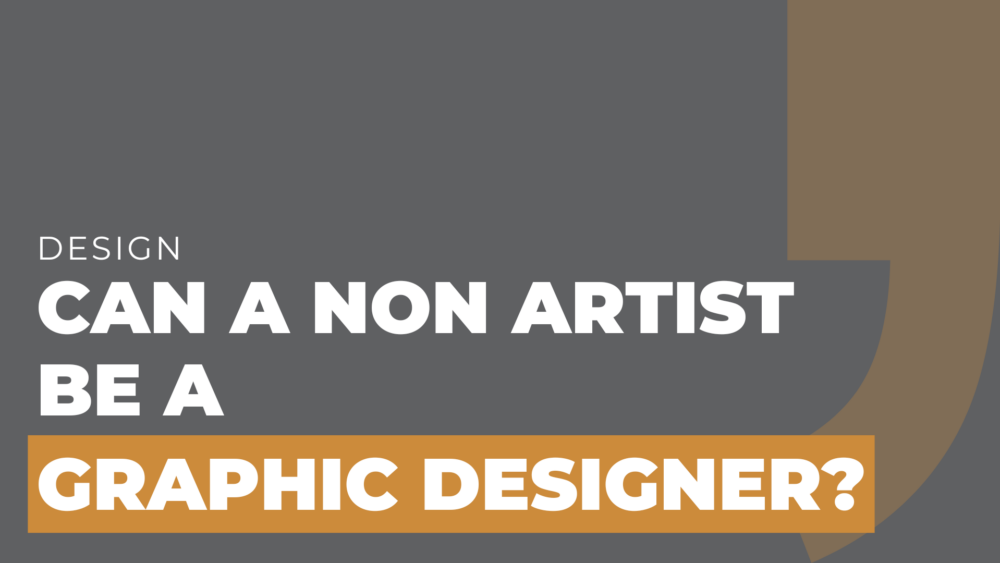Are you interested in pursuing a career in graphic design but feel hindered by the belief that you must be a talented artist?
It’s time to shatter that misconception.
Can a non-artist be a graphic designer?
The short answer is yes.
Although you may associate graphic design with artistic ability, technical skills are just as important in the field.
In fact, a non-artist can be even more successful than an artist when it comes to graphic design because they have more room to focus on the technical side of things such as coding and software knowledge.
Furthermore, while the ability to draw is not necessary for a successful graphic designer, it can be beneficial in terms of understanding composition and visual hierarchy.
Today, the industry has evolved to encompass a wide range of skills and approaches, allowing individuals from diverse backgrounds to excel as graphic designers, even without traditional artistic abilities.
The Changing Landscape of Graphic Design
Gone are the days when graphic design was solely about sketching and painting.
With advancements in technology and the emergence of digital design tools, the focus has shifted towards vision, creativity, and problem-solving.
This means that while drawing and art skills can certainly be an asset, they are not an absolute requirement for success.
Can I do graphic design if I can’t draw?
Yes, indeed.
Graphic design has become a highly demanded industry.
It’s a medium where ideas are brought to life through visual representation.
Instead of relying solely on manual artistry like drawing , designers now leverage cutting-edge software platforms like Adobe Creative Suite, Canva, and Figma to execute their vision.
These tools allow individuals to manipulate shapes, colors, and typography, creating stunning visuals without needing to draw them freehand.
Can you do graphic design without being an artist?
Let’s take a look at some inspiring real-life examples of graphic designers who have proven that being a talented artist is not the only path to success in this field:
David Carson
Known for his groundbreaking work in typography, Carson revolutionized graphic design in the 1990s.
Despite not having formal artistic training, his unconventional approach and keen eye for aesthetics made him one of the most influential designers of his time.
Saul Bass
Bass was a renowned graphic designer and filmmaker known for his iconic movie posters and corporate logos.
While he had a background in graphic arts, his ability to communicate a brand’s essence visually set him apart, showcasing that graphic design is about conveying a message rather than simply drawing.
April Greiman
Greiman is widely recognized as a pioneer in digital design.
Her work seamlessly blended technology, photography, and typography to create visually striking compositions.
She demonstrated that being a graphic designer is about pushing boundaries and embracing new mediums, regardless of traditional artistic skills.
Can you become a graphic designer without talent?
While artistic talent can undoubtedly enhance your graphic design journey, creativity goes beyond the ability to draw or paint.
Graphic designers excel at solving visual problems, understanding the target audience, and effectively communicating messages through visuals.
By developing these key skills, you can become a successful graphic designer, even if you’re not traditionally considered an artist.
Can I be graphic designer without creativity?
No.
Creativity is essential for success in graphic design.
However, creativity doesn’t necessarily mean being able to draw or paint well.
Instead, it involves the ability to think outside the box and come up with new ideas on how to communicate a message through visuals.
It also involves understanding what resonates with your target audience and finding an effective way to convey your message.
In short, creativity is the driving force behind graphic design and without it, a designer will not be successful in making a living.
So, can a non-artist be a graphic designer?
Absolutely!
The industry welcomes individuals with diverse skill sets, allowing them to contribute their unique perspectives and talents.
Don’t let the lack of traditional artistic abilities hold you back.
Graphic design is an ever-evolving field, and with the right creativity, motivation, and dedication, you can become a successful designer – even if you don’t think of yourself as an artist.


Comments are closed.